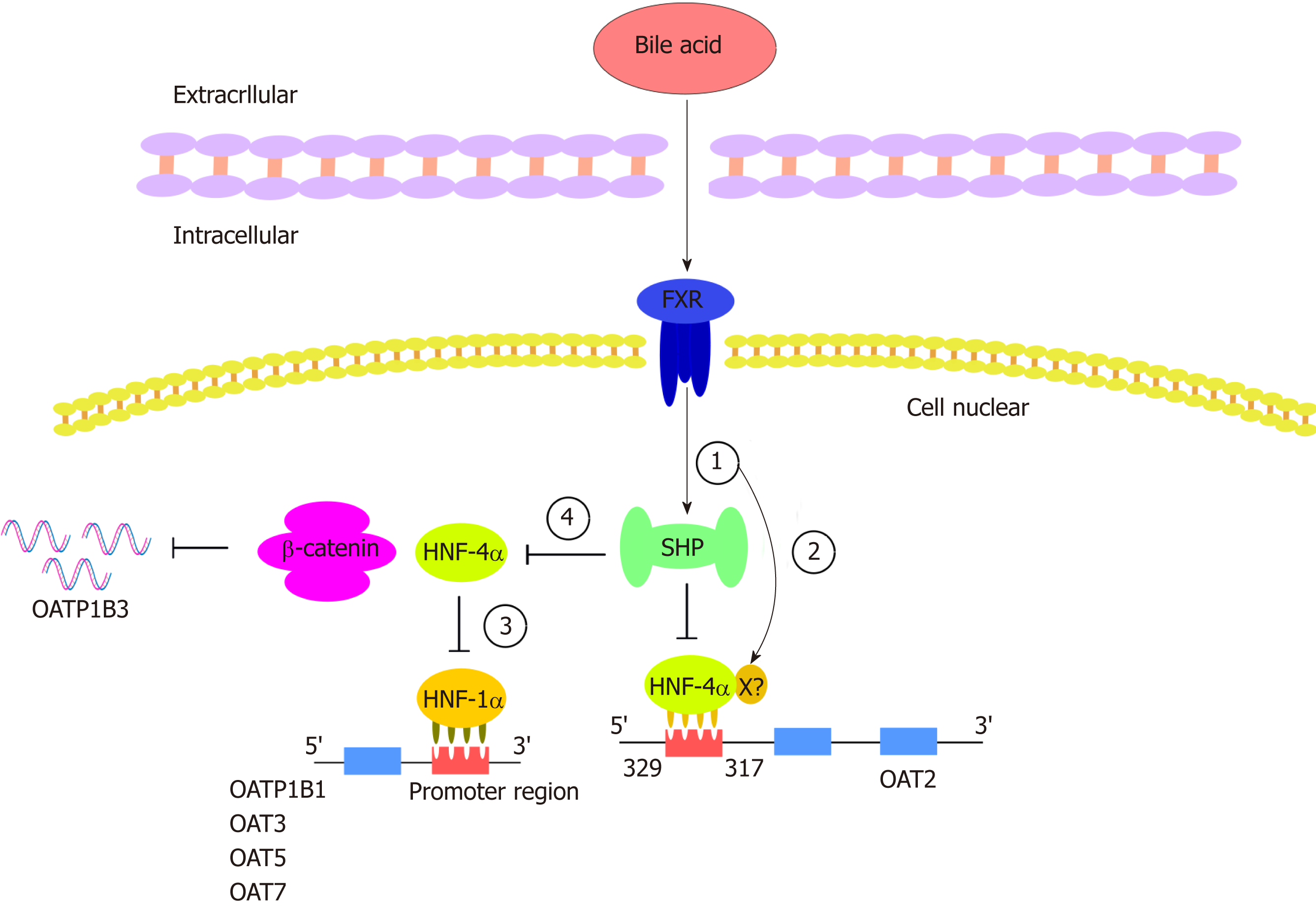Copyright
©The Author(s) 2019.
World J Clin Cases. Dec 6, 2019; 7(23): 3915-3933
Published online Dec 6, 2019. doi: 10.12998/wjcc.v7.i23.3915
Published online Dec 6, 2019. doi: 10.12998/wjcc.v7.i23.3915
Figure 3 Hepatocyte nuclear factor regulates organic anion transporters and organic anion transporter polypeptides through a mechanism composed of a series of cascade reactions.
In this cascade, various bile acids can enhance the transactivation ability of farnesoid X receptor (FXR). (1) FXR can activate the target gene SHP. SHP negatively regulates HNF-4a, a common target of SHP; (2) In addition to its activation through the SHP-dependent mechanism, FXR may directly bind to negative reaction elements (X) located in the promoter of HNF-4a. The binding of HNF-4a and OAT2 is inhibited by the processes of 1 and 2 (the common binding sites of HNF-4a were identified between 329 and 317 upstream of the transcriptional initiation site of OAT2); (3) HNF-1a is regulated by HNF-4a such that the downregulation of HNF-4a can downregulate OATP1B1, OAT3, OAT5, and OAT7; and (4) the decreased activity of HNF4-alpha inhibits the interaction between HNF4α and β-catenin, thus downregulating the expression of OATP1B3. HNF: Hepatocyte nuclear factor; FXR: Farnesoid X receptor; SHP: A transcriptional repressor belonging to the nuclear receptor family; X: Unknown negative reaction elements in the HNF-4a promoter.
- Citation: Li TT, An JX, Xu JY, Tuo BG. Overview of organic anion transporters and organic anion transporter polypeptides and their roles in the liver. World J Clin Cases 2019; 7(23): 3915-3933
- URL: https://www.wjgnet.com/2307-8960/full/v7/i23/3915.htm
- DOI: https://dx.doi.org/10.12998/wjcc.v7.i23.3915









